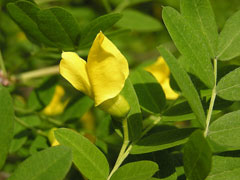




 1
1




William Bronson wrote:Mine are in their dry stage, the pods are all brown.
I will be propagating them this year, but I'm watching your experiment with great interest.
 .
.
$10.00 is a donation. $1,000 is an investment, $1,000,000 is a purchase.
 4
4




 1
1








Kirsty Pollock wrote:I know nothing about Caravans beans, .
 1
1




 1
1




Kirsty Pollock wrote:I know nothing about Caravans beans, but I do know that horse chestnuts are
A) not edible with any amount of processing (correct me if I'm at all wrong, because they grow near me in abundance)
B) usable as laundry soap - the instructions I saw were to soak, blend somewhat, drain and use the liquid.
$10.00 is a donation. $1,000 is an investment, $1,000,000 is a purchase.




 2
2




Ellen Lewis wrote:My understanding is that horse chestnuts have been traditionally used as famine food after being ground and then given a long soak in running water, as with acorns but longer.
 1
1








Maybe Life is always like being on a trapeze or a tightrope at the circus...
 1
1









Louis-Philippe Bonhomme-Beaulieu wrote:Hi all,
I know this is an old thread, but I would like to draw your attention to some scientific studies that suggest that peas from the Siberian Pea shrubs (Caragana arborescens) may not be the best legume to add to your plate as a staple food.
Firstly, the peas from the Siberian Pea shrub contain a significant amount of the toxic amino acid arginine analogue L-Canavanine, according to the following article:
"Colutea arborescens, Caragana arborescens, Vicia gigantea, Robinia pseudoacacia and Wisteria floribunda, representative of many prolific canavanine producers, store from nearly 6 to 13% canavanine by dry weight" -- L-Canavanine: a higher plant insecticidal allelochemical, Amino Acids. 2001;21(3):319-30. doi: 10.1007/s007260170017, temporary link to the content of this article.
Secondly, this interesting article investigated the death of Chris McCandless in 1992 established the possibility of L-Canavanine toxicity, which was likely exacerbated by McCandless's state of malnutrition. Also, it describes reports of symptoms similar to systemic lupus erythematosus in monkeys and humans that consumed L-Canavanine in low concentrations (2 wt% of diet for the monkeys). -- Presence of L-Canavanine in Hedysarum alpinum Seeds
and Its Potential Role in the Death of Chris McCandless, Wilderness & Environmental Medicine. 2015;26:36-42.
I hope these articles provide food for thought!
 2
2




I'm only 65! That's not to old to learn to be a permie, right?

|
Something must be done about this. Let's start by reading this tiny ad:
The new kickstarter is now live!
https://www.kickstarter.com/projects/paulwheaton/garden-cards
|




